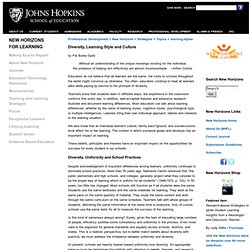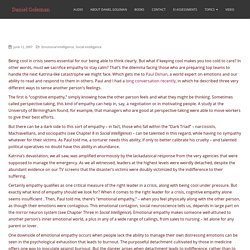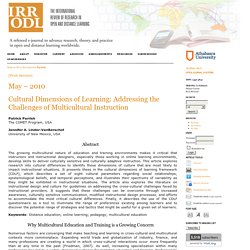

Intercultural Humor. Brother Sharp (犀利哥) About Brother Sharp (犀利哥) is the nickname given to Chen Guorong, a homeless man from the streets of Ningbo in China’s Zhejiang province.

The man became a national celebrity for his undoubtedly handsome face in February 2010 after a photograph of him wandering the streets was uploaded online. Eventually, the Chinese netizens tracked down and located the man through the means of Human Flesh Search Engine. Origin On the morning of January 30th, 2010, a photographer took his new Sony video camcorder to Tian Yi Square and decided to try out the new lens by shooting street scenes for the photography community forum Fengniao. “He has a very special temperament,” stated Mr. Spread. Sichuan food: Chengdu restaurant Yu's Family Kitchen. While the flavors are familiar, the cuisine at Yu’s Family Kitchen in Chengdu, Sichuan, is anything but common or safe.

Even the chef’s simplest dish, a seemingly uncomplicated steamed red bean bun, is artistically pricked with shears, transforming it into an edible hedgehog. Artistic details like these have propelled Yu's to the top of Chengdu's "must dine" lists -- and lend considerable clout to claims the Sichuan city is one of the hottest culinary destinations on the planet right now. World's rudest countries for travelers. Travel search site Skyscanner recently released a list of the world’s rudest nations for visitors, naming the countries whose smiley and friendly natives are apparently confined to their promotional videos.

The result, which lists 34 countries, is based on Skyscanner’s online poll, which received more than 1,200 responses from Europe, North America and Australia. France, the champion of impoliteness La Belle France was declared the champion of impoliteness, garnering nearly 20 percent of the total votes. French people are known for “their abrupt and curt nature,” especially while facing foreign tourists, Edinburgh-based Skyscanner told International Business Times. Russia took second place with 16.6 percent of the votes, followed by the United Kingdom (10.4 percent), Germany (9.93 percent) and a puzzingly labeled “Others” (miscellaneous countries). China (4.3 percent) ranked sixth on the list, leading Asia. Language barriers and cultural differences are the main causes.
Cross-Cultural Leadership: How to Avoid Making People Lose Face. Business leaders of multinational organizations are often confronted with cross-cultural differences.

These differences can cause misunderstandings and awkward situations between people. Especially when people feel they are losing Face. Hilarious Stereotype Maps Cleverly Reveal Cultural Differences - Wired Science. Diversity, Learning Style and Culture. By Pat Burke Guild Without an understanding of the unique meanings existing for the individual,the problems of helping him effectively are almost insurmountable.

WORLD POPULATION PYRAMID. Three Kinds of Empathy: Cognitive, Emotional, Compassionate. Being cool in crisis seems essential for our being able to think clearly.

But what if keeping cool makes you too cold to care? In other words, must we sacrifice empathy to stay calm? That’s the dilemma facing those who are preparing top teams to handle the next Katrina-like catastrophe we might face. Which gets me to Paul Ekman, a world expert on emotions and our ability to read and respond to them in others. Paul and I had a long conversation recently, in which he described three very different ways to sense another person’s feelings. Science & Nature - Human Body and Mind - Spot The Fake Smile. Www.heacademy.ac.uk/assets/bmaf/documents/publications/Case_studies/carroll.pdf.
Www.heacademy.ac.uk/assets/bmaf/documents/publications/Case_studies/carroll.pdf. Www.heacademy.ac.uk/assets/bmaf/documents/publications/Case_studies/carroll.pdf. Learning style and culture. Sites/default/files/Related-Readings/DCA_Ch7_2011.pdf. Ten tips for success as an exchange student. As the International Student Coordinator for Riverstone International School, in Boise, Idaho, in the United States, I have the joy of meeting students from a wide variety of cultures who have chosen to study in the western United States for part of their high school years.

Ultimately, everyone does very well here. Our incoming students all make friends, improve their English, as well as learn math, science and critical thinking skills through the humanities and arts. Cultural dimensions of learning: Addressing the challenges of multicultural instruction. Patrick Parrish The COMET Program, USA Jennifer A.

Linder-VanBerschot University of New Mexico, USA Abstract The growing multicultural nature of education and training environments makes it critical that instructors and instructional designers, especially those working in online learning environments, develop skills to deliver culturally sensitive and culturally adaptive instruction.
This article explores research into cultural differences to identify those dimensions of culture that are most likely to impact instructional situations. Keywords: Distance education; online learning; pedagogy; multicultural education Why Multicultural Education and Training is a Growing Concern Numerous factors are converging that make teaching and learning in cross-cultural and multicultural contexts more commonplace. The growing need for educational access leads students rightly to demand culturally adaptive learning experiences that allow full development of the individual (Visser, 2007). Awareness.